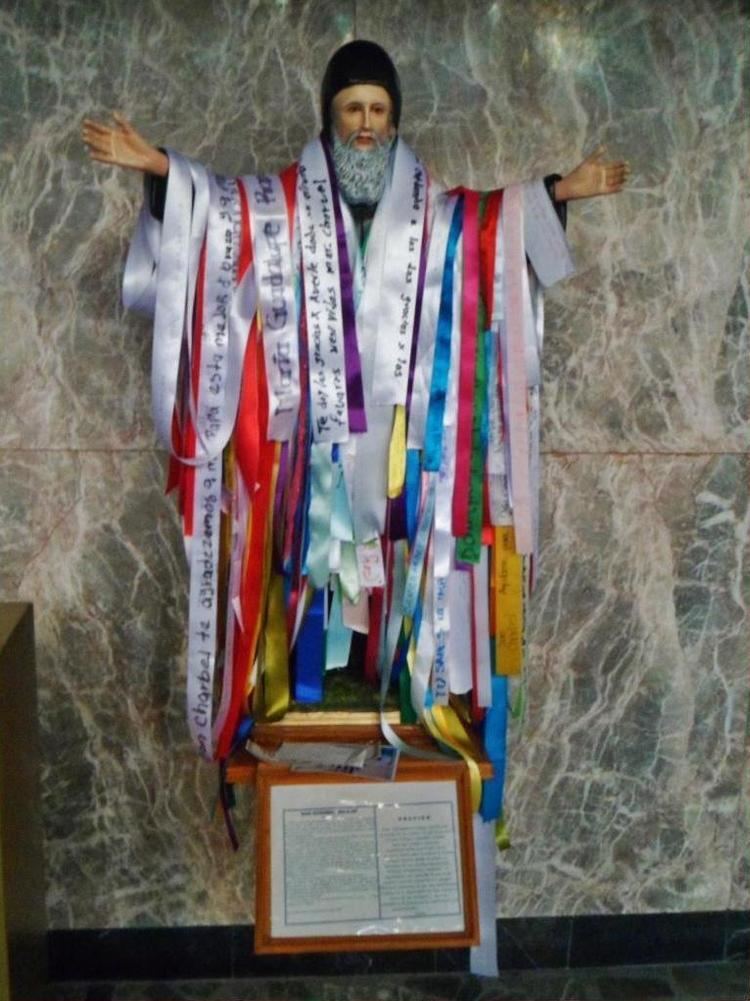 | ||
Lebanese Mexicans refers to Mexican citizens of Lebanese origin.
Contents
Although Lebanese Mexicans made up less than 5% of the total immigrant population in Mexico during the 1930s, they constituted half of the immigrant economic activity. Lebanese influence in Mexican culture can be seen most particularly in food, where they have introduced many foods and dishes and created their own recipes such as tacos Árabes.
Interethnic marriage in the Lebanese community, regardless of religious affiliation, is very high; most community members have only one parent who has Lebanese ethnicity. As a result of this, the Lebanese community in Mexico shows marked language shift away from Arabic. Only a few speak any Arabic, and such knowledge is often limited to a few basic words. Instead the majority, especially those of younger generations, speak Spanish as first language.
Carlos Slim, formerly the richest man in the world, is an example of Lebanese Mexican success in Mexican society.
Migration history
Lebanese immigration to Mexico started in the 19th and early 20th centuries. In 1892, the first Lebanese arrived in Mexico from Beirut in French ships to Mexican ports such as Puerto Progreso, Veracruz and Tampico. At that time, Lebanon was not an independent nation; the territory was held by the Ottoman Empire and later became a French protectorate. Roughly 100,000 Arabic-speakers settled in Mexico during this time period. They settled in significant numbers in Nayarit, Puebla, Mexico City and the northern part of the country (mainly in the states of Baja California, Nuevo Leon, Sinaloa, Chihuahua, Coahuila, and Durango, as well as the city of Tampico and Guadalajara).
During the 1948 Israel-Lebanon war and the Six-Day War, thousands of Lebanese left Lebanon and went to Mexico, first arriving in Veracruz. Although Lebanese people made up less than 5% of the total immigrant population in Mexico during the 1930s, they constituted half of the immigrant economic activity.
Another concentration of Lebanese-Mexicans is in Baja California facing the US–Mexican border, especially in the cities of Mexicali and Tijuana across from San Diego with a large Lebanese-American community (about 280,000), some of whose families have relatives in Mexico.
Today, the most common Lebanese surnames in Mexico include Libien (Levien),Nader, Hayek, Ali, Haddad, Nasser, Malik, Fayad, Bisteni, Abed, Farha (Farah), Slim, Diab, Khoury, Jabara (Gabara), Fares, Micha, Font Manzur, Abud, Cané Bichir, Salazar, Kuri, Assmar, Layún, Henaine and Harb.
Lebanese culture in Mexico
One Lebanese cultural tradition in Mexico itself is to place colored ribbons to the image of St. Charbel to ask some favor or some miracle and to give thanks. The tradition arose in the Candelaria Church in Merced in the historic center of Mexico City.
The immigration of Lebanese to Mexico has influenced Mexican culture, in particular food, including introducing Kibbeh and Tabbouleh, and even creating recipes such as Tacos Árabes. By 1765, dates, which originated in North Africa and the Middle East, were introduced into Mexico by the Spaniards. The fusion between Arab and Mexican food has highly influenced the Yucatecan cuisine.
Religion
The majority of Lebanese-Mexicans are Christians who belong to the Maronite, Roman Catholic, Eastern Orthodox and Melkite Catholic. The Lebanese initially practiced Catholicism independently from other Mexicans, but the Lebanese learned to speak Spanish; Lebanese-Mexican children quickly joined the country's religious activities.
A few Lebanese Muslims settled in Mexico. They were responsible for the opening of the first mosque in Mexico, built in the city of Torreon, in Coahuila, and named Suraya.
